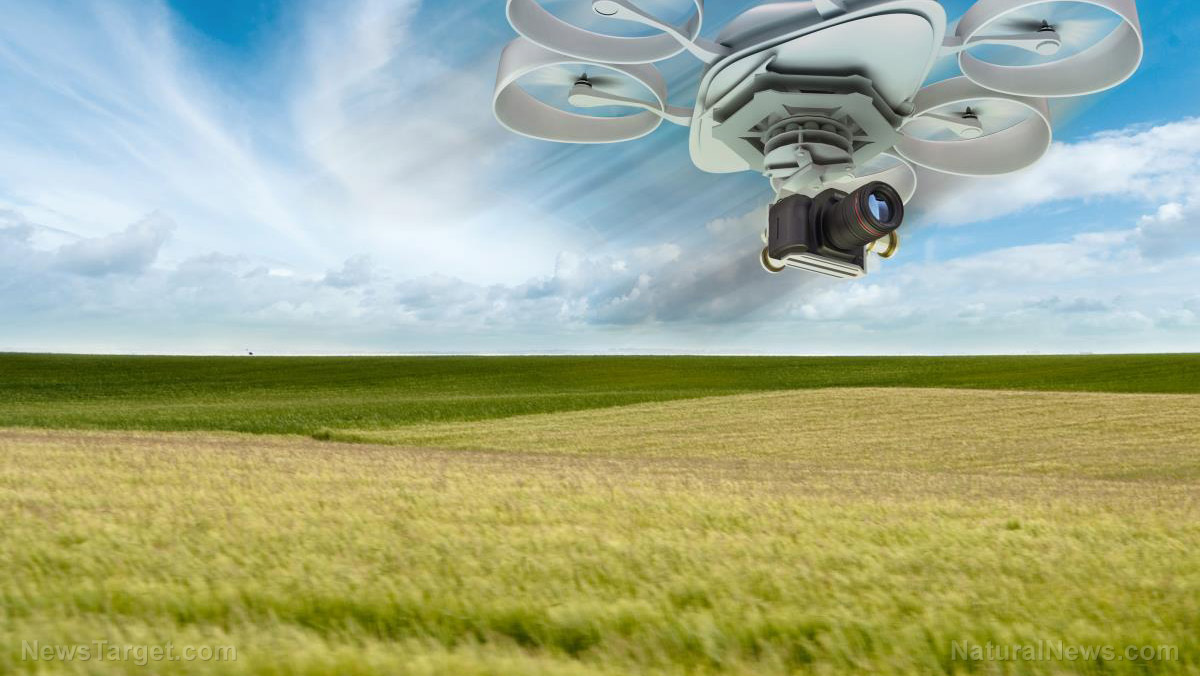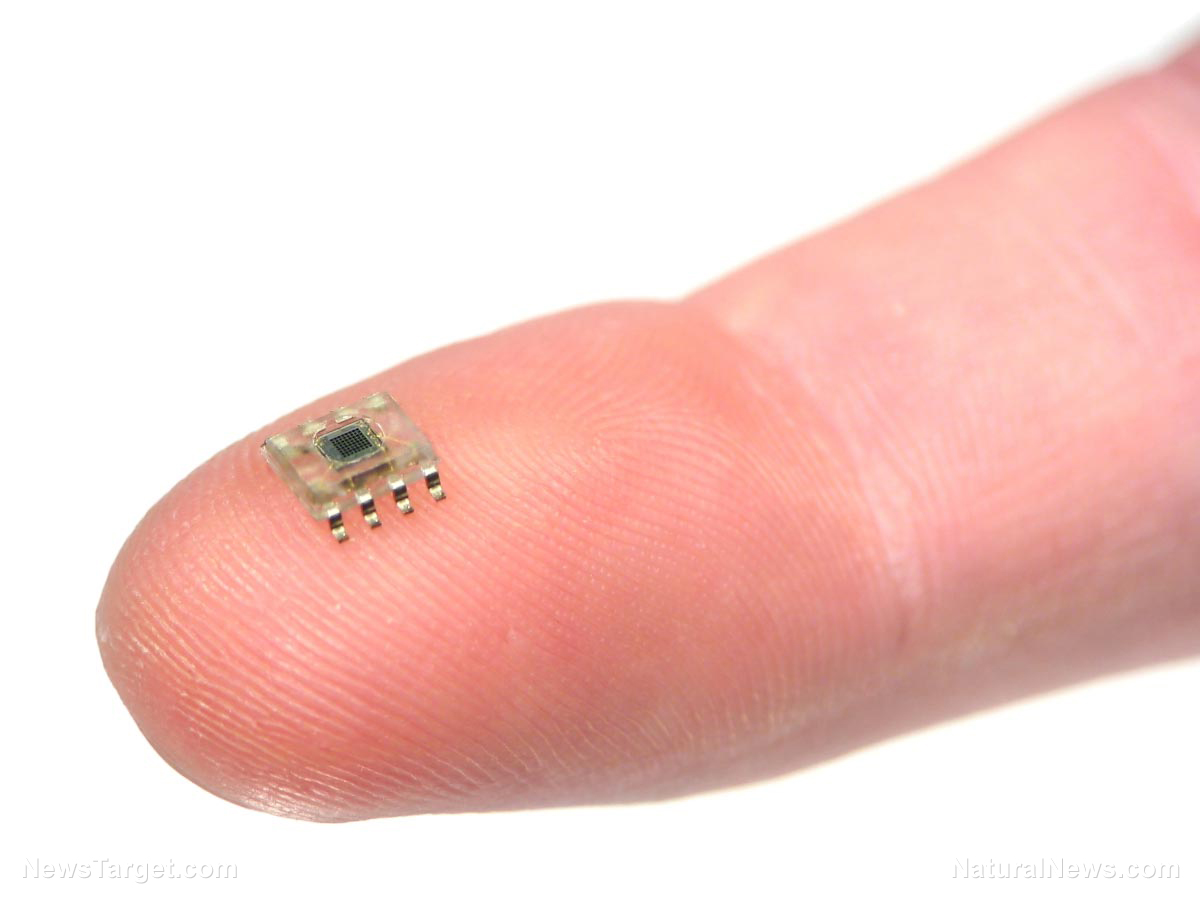Breakthrough (and scary) technology allows scientists to collect DNA from the air
04/12/2021 / By Ramon Tomey

A breakthrough technology allows scientists to obtain DNA samples from the air. The new technology collects environmental DNA (eDNA) shed by animals and humans for identification. Previously used to study fish, animals and invasive species, eDNA now shows promise in fields such as infectious disease epidemiology and forensics.
Prior to the study, eDNA had been previously detected in water, soil and snow. However, Queen Mary University of London (QMUL) senior lecturer Dr. Elizabeth Clare wanted to know if it was possible to obtain eDNA from the air. She and her colleagues then undertook the research endeavor, with their findings being published in PeerJ on March 31.
To conduct their study, the researchers sucked the air from a room where mole rats had been kept and allowed to dig burrows, as well as air from the burrows themselves. The air was pumped through two ultra-fine filters. The researchers then searched for DNA material in the filters and sequenced these samples. As expected, they found naked mole rat DNA from the air in the burrows and the larger room.
In addition to mole rat DNA, the researchers also found human DNA in the room using the technology. They surmised that the human DNA came from those taking care of the naked mole rats, even though the human caretakers spent far less time in the room. The discovery of human DNA in the room surprised researchers, but they later said it revealed the technology’s sensitivity.
Clare remarked: “Here [in this study], we provide the first published evidence to show that animal eDNA can be collected from air, opening up further opportunities for investigating animal communities in hard to reach environments such as caves and burrows.”
Nevertheless, the senior university lecturer acknowledged the eDNA extraction technology’s limitation. It relies on sucking the air in an enclosed space and passing the air through a filter. As such, it may be harder to obtain DNA samples from a larger room because they will be heavily diluted, she explained. Clare also said that in an open space, “DNA may be mixed to a meaningless soup … [wherein] ‘everything is everywhere.'”
Different fields may find environmental DNA extraction technology useful
Clare remarked that eDNA extraction “opens up some interesting questions” about its use, namely in forensics and archaeology. If a criminal is suspected to have passed through a crime scene, the technology could be tapped to obtain human DNA in the area – with further analysis confirming their identity. The study elaborated: “Using air as the source may make it possible to recover forensic traces of recent activity, even when no physical traces (such as blood or hair) have been left.” (Related: Scientific group says fingerprint evidence in crimes is practically worthless.)
The technology can also be used to obtain DNA samples of long-dead mummies or skeletons, the study said. Extracting DNA from the air has been pitched as one of many advanced sequencing approaches to identify skeletal remains.
The researchers also proposed the use of eDNA to find out the mechanism of how airborne pathogens are transmitted, in line with the current pandemic. According to them, the technology can help determine the concentration of viral particles in an infectious dose and the distance over which these particles can be delivered. “Viral particles and RNA can be collected using a similar approach to the method we have suggested here. [With] refinement in regard to quantification of a specific target, it may be possible to better define and apply safety guidelines,” they wrote in the study.
Clare and her colleagues may have a point in endorsing the use of eDNA to determine the presence of Wuhan coronavirus particles in the air. According to the World Health Organization‘s (WHO) guidance released July 2020, airborne transmission is one of many ways people can contract COVID-19.
Examination of the physics of airflow and exhaled air suggests that normal breathing and talking results in the exhalation of respiratory droplets. These then evaporate and become microscopic aerosols less than five micrometers in size. “A susceptible person could inhale aerosols, and could become infected if the aerosols contain the virus in sufficient quantity to cause infection,” the WHO said.
The global health body initially looked at medical procedures that generated aerosols as a basis for this mode of transmission. But some studies that looked at healthcare workers taking care of COVID-19 patients with symptoms – with no aerosol-generating procedures performed – also detected viral RNA particles in air samples. The WHO added that outside of the medical context, COVID-19 “super-spreader events” occurred at indoor crowded spaces with inadequate ventilation such as gyms, churches and restaurants. The inadequate ventilation and close contact caused people to inhale virus-laden aerosols and contract the pathogen. (Related: Coronavirus found to linger in the air in crowded spaces.)
Visit Discoveries.news for more about eDNA collecting technologies.
Sources include:
Tagged Under: breakthrough, discoveries, environmental DNA, forensic examination, future science, future tech, genetic samples, infections, innovations, inventions, medical tech, research, science and technology
RECENT NEWS & ARTICLES
COPYRIGHT © 2017 FUTURETECH.NEWS
All content posted on this site is protected under Free Speech. FutureTech.news is not responsible for content written by contributing authors. The information on this site is provided for educational and entertainment purposes only. It is not intended as a substitute for professional advice of any kind. FutureTech.news assumes no responsibility for the use or misuse of this material. All trademarks, registered trademarks and service marks mentioned on this site are the property of their respective owners.





















